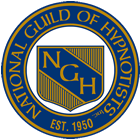Hypnosis helps even if everything else fails.James Braid
Electricity – that is the stuff of our brain, with its billions of brain cells called neurons that discharge and communicate with each other through electrical charges. As soon as the brain receives information, neurons process it by changing their electrical state. Potential fluctuations occur and the potentials generated add up to collective signals. Cerebral electrical activity can be measured on the head surface with an electroencephalography (EEG) machine. Above you can see an electroencephalography recording of the measured brain waves. The frequency bands go up and down in intensity, resembling waves, hence the name brain waves. During different mental states, other electrical activities in our cerebral cortex can be measured via electrodes. These frequency bands run between 0.1 and 100 Hertz (Hz).
When you are in a deep trance (somnambulism), your brain produces delta waves. Delta waves are also measured during deep, dreamless sleep. Your consciousness completely disappears during sleep. In somnambulism, it is latent.
Delta waves stimulate the release of growth hormones and your body has time to renew and repair cells. Because they are generated during dreamless sleep and a somnambulistic state, delta waves are associated with the deepest levels of relaxation and restorative sleep. The more delta waves your brain can produce, the better you can empathize with others.
Do you see dream images right before falling asleep? Then your brain is producing theta waves, meaning you are in a medium-level trance (hypotaxis), which gives you even better access to your subconscious than when you are in a light trance (somnolence). Theta waves characterize the twilight state and REM sleep. Infants have theta waves until the age of four. The presence of excessive levels of theta waves point to attention problems and restlessness.
Theta activity puts you in a powerful state of mind to allow access to your subconscious where your thoughts and feelings reside, your beliefs and behavior patterns. Once the theta waves are stimulated, your feelings of happiness increase. Your body releases endorphins and the sensation of pain is reduced. In general, theta waves help you calm your thoughts and emotions or become creative or remember forgotten events. You are now very capable of learning. The constant chatter ceases and you are more willing to accept the hypnotic suggestions from your Hypnocoaching.
Alpha brain waves happen when you are relaxed. Theta waves are slower than alpha waves. In a light trance, you will be able to measure both alpha and theta waves in your brain.
Alpha waves indicate that you are in a relaxed state. The alpha range becomes dominant when daydreaming, just before falling asleep, or early in the morning. Alpha patterns cause your body to release the happy hormone serotonin, and you begin to feel refreshed and happy. This state is associated with improved memory performance.
Would you like to experiencing the alpha frequency? Simply close your eyes and try to look inside yourself, focusing less on your surroundings. As a “bridge between consciousness and subconsciousness”, the alpha state is the link between other brain waves. From here, you can access your subconscious mind or return to the waking state. Due to stress, worry and anxiety, many people exhibit deficient alpha activity.
During a work day, our brain activity is marked by beta waves. These brain waves dominate when you are awake and active. As soon as you open your eyes and focus on your surroundings, you are experiencing beta waves. High focus and peak performance are associated with this normal waking state or lower beta waves, whereas anxiety and stress put you in the mid-range, where you suffer from a constant state of alertness. Excessive beta activity eventually causes you to be out of touch with your inner self and to be easily manipulated. Beta wave activity is typically seen in teenagers.
The gamma frequency band (40 – 100 Hz) is the least researched. It is believed that gamma waves can lead to transcendental experiences. Dissociation phenomena and the feeling of universal knowledge have been experienced. Since frequencies above 40 Hz are difficult to detect, these findings are not based on scientific publications, but on self-experiences.
Specific triggers can manipulate brain waves. According to the theory of frequency-following responses (FFR), the human brain follows acoustic and visual stimuli that are prolonged. What’s more, it begins to oscillate at the same frequency. According to scientific research, this is what happens during hypnosis, when lights flash at specific frequencies, or even during shamanic ceremonies. In the latter, drumming, dancing, and singing create a rhythmic, repetitive sound that puts participants into a trance. There is a range of options for hypnotic inductions. Your Hypnocoach will determine which one suits you best by conducting various tests prior to your hypnosis.
Electrical vibrations determine your emotions. During waking consciousness, the human brain oscillates in the beta frequency range, whereby individuals who have higher frequencies experience anxiety and panic. You cannot think for yourself and feel as if you are on autopilot. It is as if you have lost all control. The good news is that we can actively change our brain waves for a better mental state. Hypnosis, meditation, music, sound waves, and visual effects manipulate our brain waves. Perhaps you have already been hypnotized and know how soothing the deep relaxation induced by hypnosis can be.
Source:
Photo: Adobe Stock (edited).
Damn interesting. Please write more of that. Thanks in advance.
and I just tried to hypnotize myself. I like the feeling!





